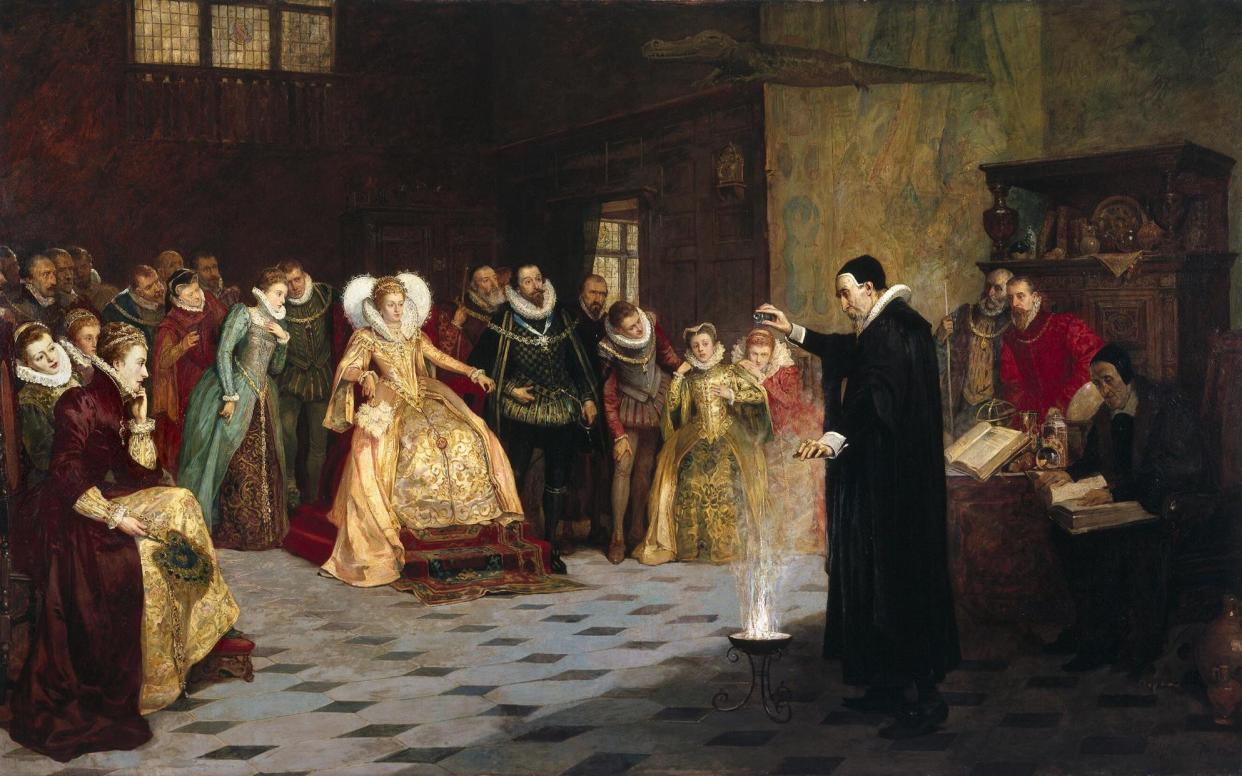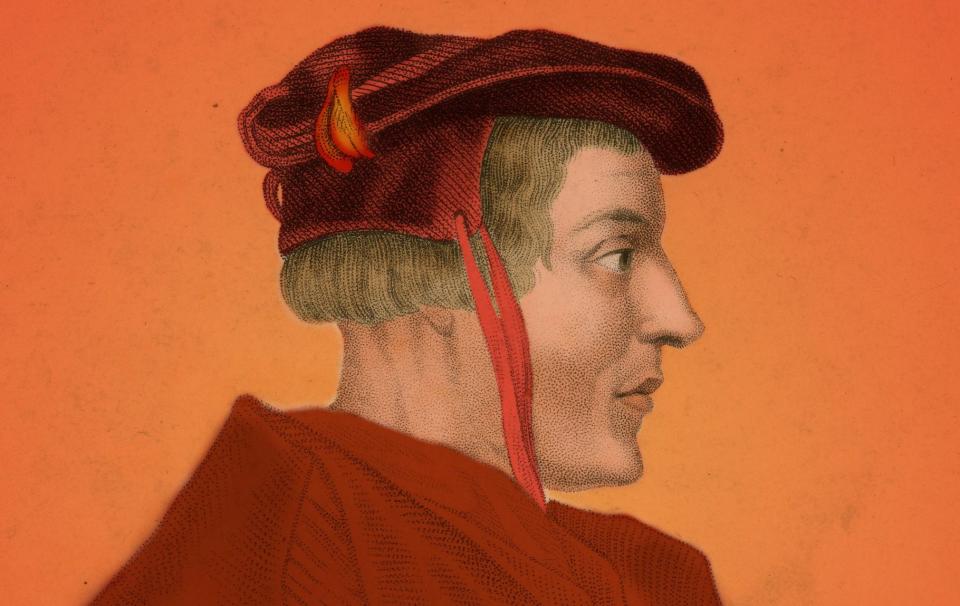How to speak with angels and summon demons

The French philosopher Charles de Bovelles long recalled the horror of a stay in 1504 with the abbot Johannes Trithemius. There, Bovelles read the learned monk’s yet-unpublished Steganographia, a treatise on action at a distance through the aid of “spirits (not to say demons)”, who would convey secret messages. These demons had barbarous names, and were of the very kind of which Trithemius had declared: “If you hesitate slightly, being fearful, in conjuring them to do your will, or make a small mistake in the formula you use to conjure them, by leaving out a word or getting them out of order, they will kill you at once.”
It seems to me that de Bovelles must have been pretty dim, or was pretending offence. As its title announced – Steganographia: “concealed writing” – Trithemius’s manuscript was about cryptography. The barbaric names of demonic powers simply indicated the different methods of encryption to be used. Some were elementary, such as hiding a message in the initial letters of alternate words of a seemingly innocuous passage. Others were harder to break, and required transposition tables that made the code more than a simple alphabetic substitution.
De Bovelles was frightened, he said, because he took his host for a magus, a scholar of power who harnessed spirits to accomplish feats impossible for human beings. Trithemius (1462-1516) is, indeed, the central figure in this natural history of magi by Anthony Grafton, a veteran American specialist in the early modern period. The 16th century saw “peak magic”, disseminated in books by Trithemius and by the reputed top magus Henry Cornelius Agrippa (1486-1535), and the magus phenomenon went together with the New Learning of Renaissance humanists: it was no survival of medieval superstition, but harnessed the newly unearthed wisdom of Hermes Trismegistus, a figure (it was thought) with Egyptian origins and a connection with Moses.
The brilliant Platonist Marsilio Ficino had provided a Latin translation of “Hermetic” works (as those relating to Trismegistus are known) in the later 15th century. The Neoplatonist cosmos was run by spirits. Instead of planets orbiting, as we think today, under the force of gravity, each was moved by a spirit or angel, who might also influence earthly affairs. Every material thing was controlled by unseen spirits. The magus’s opportunity was to persuade or conjure these powers to perform his commands.
But was that not wicked? It sounded like witchcraft, and might the spirits conjured not be evil ones? A pact with such demons turned a magus into the Dr Faustus of Christopher Marlowe’s play. Trithemius was suspected of illicit angel magic, and he moved to another monastery. He had himself to blame for describing perfectly natural encryption as though it were the work of occult powers; his motive seems mysterious, though it was normal at the time to couch science in imaginative terms. Even the syllogisms of logic were accorded mnemonic names: Barbara, Celarent, Darii, Ferio.

I was reminded of these by the sorts of names given to demons, benign or evil, by England’s own magus, Elizabeth I’s adviser John Dee (1527-1608), who conversed, he thought, with spirits called Madimi, Baligon and Obelison. Grafton quotes some of Dee’s fascinated marginalia on writings by Trithemius, whom Dee clearly took for more than a clever cryptographer. Dee was an intelligent man, a mathematician and bibliophile adrift in a murky world of angel magic; I’d have liked to hear more from Grafton about him, but the great magus whom Dee followed and who dominates the last quarter of Magus is Agrippa. The first manuscript of his On Occult Philosophy dates from 1510, and the book grew through the years. He fitted everything known about magic into “a single, lucid structure with three levels: the elementary or terrestrial realm, ruled by medicine and natural magic; the celestial realm, ruled by astrology; and the intellectual realm, ruled by angelic magic”.
Magic could be made all-encompassing because language, belonging to a shared world view, allowed it to be. In the 16th century, “scientia” also included theology. Philosophy covered what we today call experimental science; similarly, natural magic denoted practical physics and chemistry. Grafton suggests that the mathematical and mechanical magic that allowed Agrippa and Dee to send artificial birds or insects flying over a stage set would develop into the science that produced the machinery of the Industrial Revolution.
Yet a more vivid image of Agrippa, the “Archimagus”, was left in 1600, three generations after his death, by a magpie of a scholar, Martín Del Rio. He tells of a young man prying into Agrippa’s study while the latter was away. Reading one of Agrippa’s books, the man is interrupted by a knocking. It turns out to be a demon awaiting instructions. The young man is killed, but Agrippa on his return commands demons to manipulate the body as if it were alive, taking it walking through the streets. Four days later, the body, abandoned by the demons, is found with marks of strangulation, and Agrippa flees to the Rhineland. The tale, like Marlowe’s, was more memorable than the reality.
Magus: The Art of Magic from Faustus to Agrippa is published by Allen Lane at £30. To order your copy for £25 call 0844 871 1514 or visit Telegraph Books


